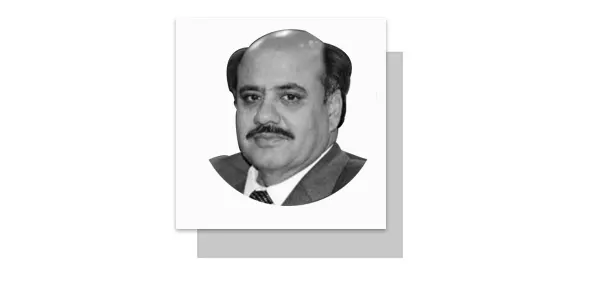THE recent four-day military conflict between India and Pakistan, the continuity of the Ukrainian war since February 2022, the increasingly alarming situation in the Middle East and the potential for escalation of conflict in the Taiwan Strait and Korean Peninsula are all factors that increase the likelihood of state-on-state wars.
These factors have led to a significant investment in the modernization of weaponry, rapidly transforming international geopolitics.
The warring states use immensely advanced fighter jets and missiles and deploy new-generation technology and weapons, including armed drones.
The resurgence of nuclear weapons and missile defense systems in international statecraft, reminiscent of the Cold War era, is a pressing concern.
With Russia’s nuclear threats, the U.S. Golden Dome initiative, a missile defense system, China and North Korea’s expanding arsenals and potential proliferation in the Middle East, Europe and East Asia, the world is thrust into a new era of heightened nuclear risk.
These trends, coupled with the emergence of disruptive technologies, create a more complex and volatile global security environment.
More states now possess devastating capabilities, increasing the risk of nuclear conflict, particularly in South Asia and Europe, where the danger is most imminent.
France seems determined to dominate and lead the new European security setup.
President Emmanuel Macron has expressed his willingness to share French nuclear weapons for European security—deployment of French nuclear bombers across the European Union (EU) for the defense of Europe.
However, France’s nuclear deterrence to the EU would be subject to conditions.
They are: France will not finance the security of other nations.
Secondly, the ultimate authority over the use of French nuclear weapons rests exclusively with the French President.
It’s debatable whether France, with its 280 nuclear warheads, is able to provide credible nu-clear deterrence to other European countries.
Russians are closely monitoring the French nu-clear deployment strategy.
Dmitry Peskov, Kremlin spokesman, opined, “The proliferation of nuclear weapons on the European continent is something that will not add security, predict-ability, or stability to the European continent.”
India and Pakistan’s 2019 and 2025 military standoff alarms about the probability of the first use of nuclear weapons in a war between the nuclear-armed states.
During the recent four-day military crisis, both sides attacked each other’s mainland with missile and air strikes.
They employed new-generation technology and weapons, including drones, to target key air bases.
They were edged close to all-out war after becoming nuclear-weapon states in May 1998 for the first time on May 10, 2025.
The United States President Donald Trump on social media wrote that thanks to his intervention, a nuclear war had been averted.
On May 12, he asserted in response to a reporter’s question at the White House that “the US didn’t just ‘broker’ the ceasefire between India and Pakistan, it averted a ‘nuclear conflict.
” Ironically, India and Pakistan sides have operated on the assumption that this level of military conflict can be maintained without triggering deliberate or inadvertent nuclear escalation.
Therefore, both sides avoided nuclear signalling during the crisis.
India escalated the Pahalgam crisis by launching Operation Sindoor on May 7, 2025, but failed to dominate the situation and knock out the Pakistani Air Force in a dogfight.
It seems either the Trump administration took the crisis lightly or implicitly endorsed the Indian militaristic initiatives after the post-Pahalgam attack on April 22, 2025.
The U.S.Vice President J.D.Vance said, “We’re not going to get involved in the middle of a war that’s fundamentally none of our business and has nothing to do with America’s ability to control it.”
The unexpected performance of the Pakistan Air Force on May 7 and Pakistani forces’ daring neutralization of 26 targets, including an advanced S-400 surface-to-air defense system on May 10, 2025, shocked India and its allies.
The fast wearing down of the self-assumed superiority of the Indian armed forces invited President Trump’s intervention and facilitation in establishing a ceasefire.
He said, “I am pleased to announce that India and Pakistan have agreed to a full and immediate ceasefire.”
He also opined that he saved the region from nu-clear war.
The third-party intervention and restoration of peace between India and Pakistan have saved both sides’ faces.
Therefore, New Delhi and Islamabad are publicizing their versions of the war’s outcome.
Pakistan signaled its victory by conferring the title of ‘field marshal’ on the army chief, Asim Munir.
The Prime Minister Shehbaz stated that the 1971 defeat had been avenged.
The French offer to deploy nuclear weapons in the EU and President Trump’s assumption about the escalation of a conflict between India and Pakistan to total war having a nuclear dimension underscores the significance of nukes in the rapidly transforming international strategic environment despite the fabrication and integration of new disruptive technologies in advancing weaponry.
—The writer is Prof at the School of Politics and IR, Quaid-i-Azam University, Islamabad. (jaspal_99@hotmail.com)


















